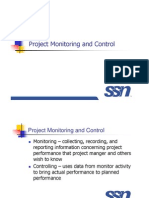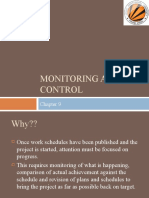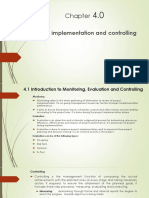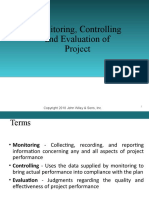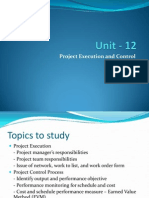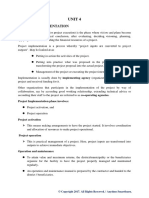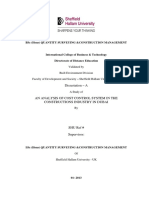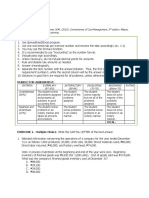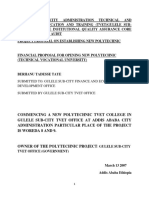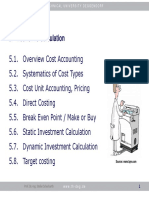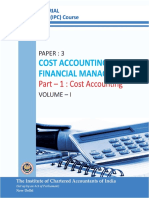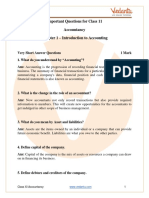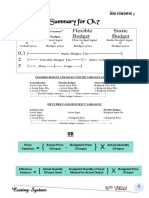0% found this document useful (0 votes)
49 views31 pagesChapter 4 Project Implementation and Controlling.
Project control is a systematic process that ensures design requirements, budget, and schedule are met through continuous monitoring and corrective actions. It involves tracking project performance, assessing efficiency, and making timely decisions based on actual data compared to initial plans. Effective cost control and quality management are essential for project success, utilizing methods such as Earned Value Analysis to measure progress and forecast outcomes.
Uploaded by
prajwalkhadka68Copyright
© © All Rights Reserved
We take content rights seriously. If you suspect this is your content, claim it here.
Available Formats
Download as PDF, TXT or read online on Scribd
0% found this document useful (0 votes)
49 views31 pagesChapter 4 Project Implementation and Controlling.
Project control is a systematic process that ensures design requirements, budget, and schedule are met through continuous monitoring and corrective actions. It involves tracking project performance, assessing efficiency, and making timely decisions based on actual data compared to initial plans. Effective cost control and quality management are essential for project success, utilizing methods such as Earned Value Analysis to measure progress and forecast outcomes.
Uploaded by
prajwalkhadka68Copyright
© © All Rights Reserved
We take content rights seriously. If you suspect this is your content, claim it here.
Available Formats
Download as PDF, TXT or read online on Scribd
/ 31






